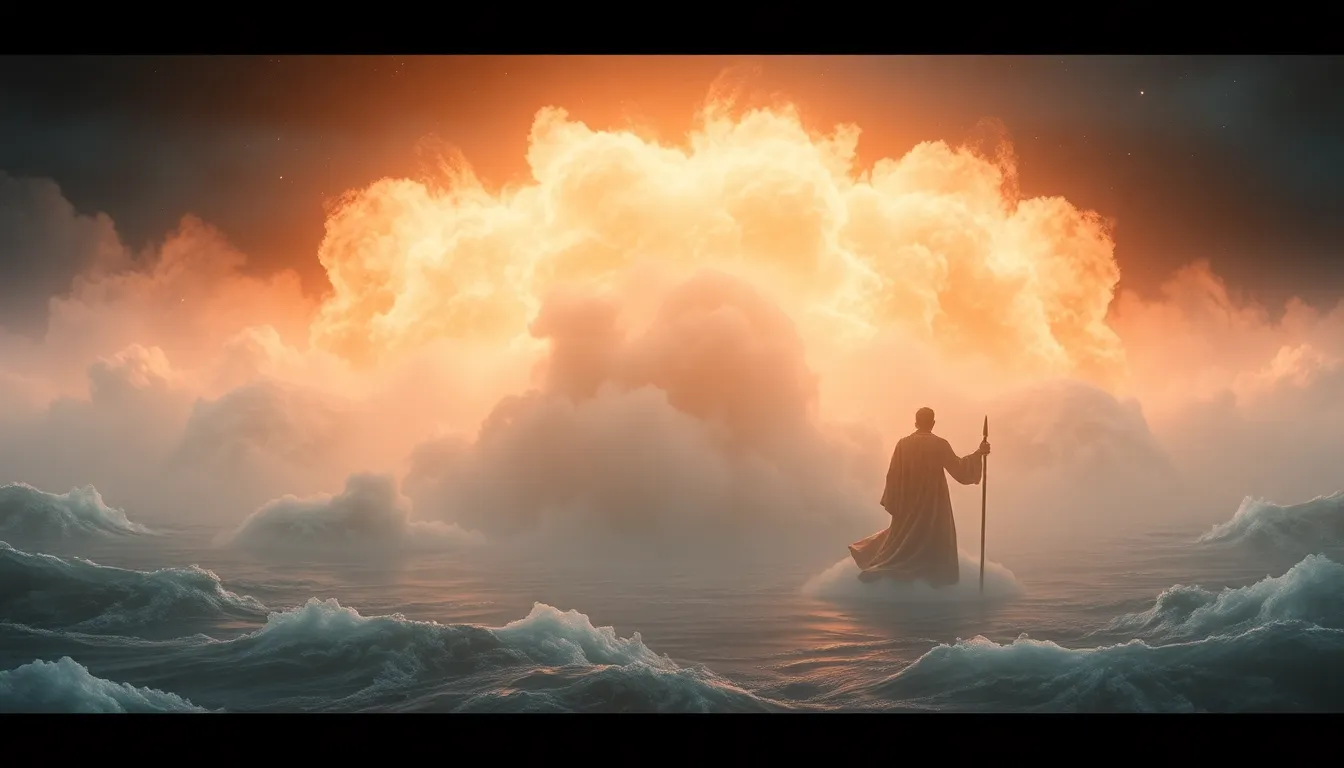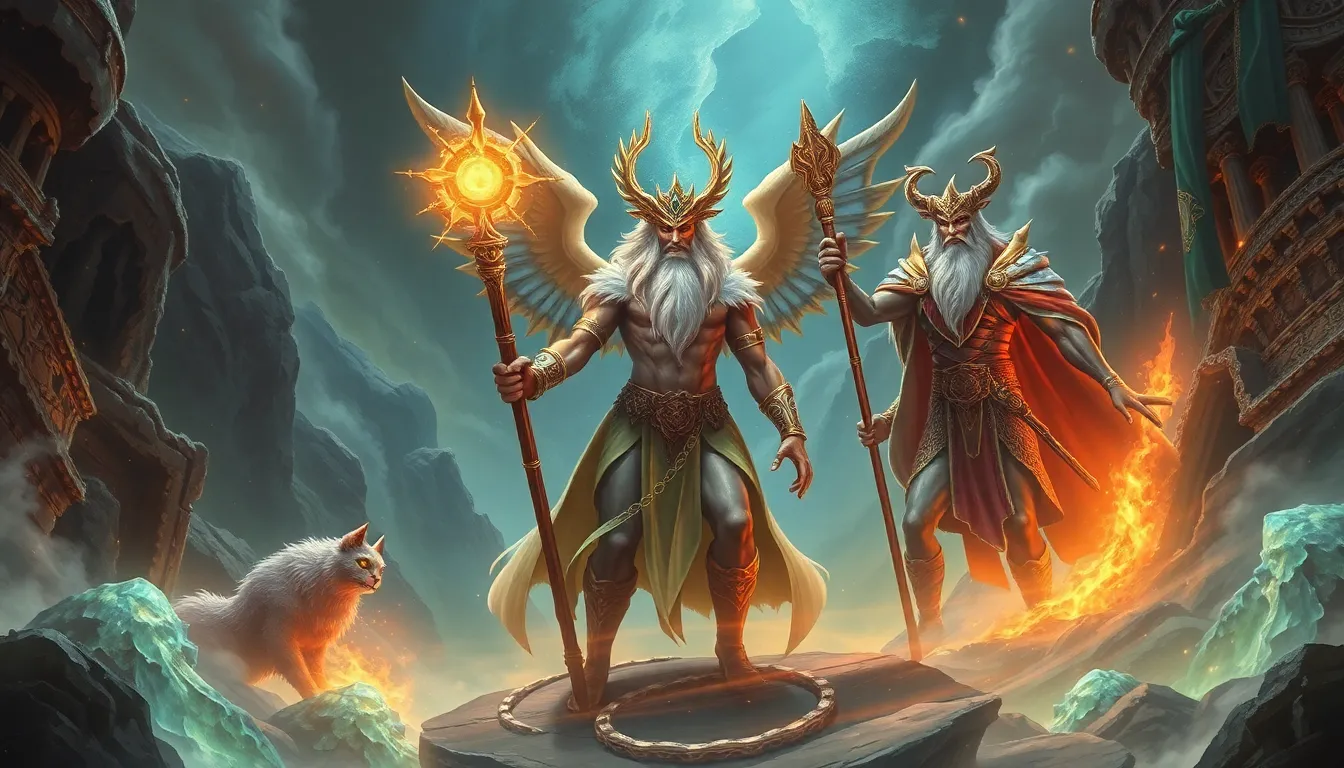The Flood as a Catalyst for Innovation: Myths That Inspire Change
Introduction: Understanding the Flood Myth
Throughout history, flood myths have emerged in various cultures, symbolizing both catastrophe and renewal. These narratives often depict a great deluge that wipes out the old world, creating a space for new beginnings and transformation. Flood myths serve not only as cautionary tales but also as profound allegories for change and innovation. They remind us that from the depths of despair and loss, new ideas and advancements can emerge, driving humanity forward.
Historical Context: Flood Myths in Various Cultures
Flood myths are prevalent across different cultures, each with unique narratives that share common themes. Notable examples include:
- Noah’s Ark (Judeo-Christian tradition): A story of divine retribution and mercy, where Noah saves species by building an ark.
- The Epic of Gilgamesh (Mesopotamia): Featuring Utnapishtim, who survives a flood sent by gods to destroy humanity.
- Deucalion and Pyrrha (Greek mythology): Survivors of a flood sent by Zeus, who repopulate the earth after the deluge.
These myths reveal universal themes such as survival, rebirth, and the relationship between humanity and nature. They illustrate how societies interpret calamities and use storytelling to convey moral and ethical lessons.
The Psychological Impact of Catastrophe
Disasters like floods have profound psychological impacts on individuals and communities. The human psyche often reacts with a mix of fear, grief, and resilience. In the aftermath of such events, many people find themselves reevaluating their lives and priorities. Trauma and loss can serve as powerful catalysts for creativity and innovation. The process of rebuilding often requires:
- New ways of thinking
- Creative problem-solving
- Collaborative efforts
This transformation can lead to innovative solutions that address not only immediate challenges but also pave the way for long-term advancements.
Floods in Literature and Art: Inspiration for Change
Flood myths have significantly influenced literature and the arts, serving as powerful metaphors for change and renewal. Notable works inspired by flood narratives include:
- “The Flood” by John Milton: A poem that reflects on the biblical flood, exploring themes of sin and redemption.
- “The Book of Genesis”: The narrative of Noah’s Ark has inspired countless reinterpretations in art, from paintings to modern graphic novels.
- “The Deluge” by Gustave Doré: A dramatic illustration capturing the chaos and despair of the flood.
These works illustrate how flood myths can inspire reflection on human values, moral dilemmas, and the resilience of the human spirit.
Technological Innovations Driven by Environmental Challenges
Real-world flooding events have sparked technological innovations aimed at mitigating future risks. Examples include:
- Flood-resistant architecture: Designs that elevate buildings above flood levels and utilize water-resistant materials.
- Smart flood monitoring systems: Technologies that use sensors and data analytics to predict flood events and alert communities.
- Wetland restoration: Using natural landscapes to absorb excess water and reduce flood impacts.
These innovations demonstrate how environmental challenges can drive human ingenuity, resulting in solutions that benefit society as a whole.
The Role of Community Resilience in the Wake of a Flood
Communities often come together in the aftermath of a flood, showcasing resilience and innovation. Some successful community-led initiatives include:
- Neighborhood rebuilding programs: Collaborative efforts to restore homes and infrastructure.
- Community gardens: Projects that promote sustainable agriculture and food security.
- Local flood response teams: Groups formed to prepare for future flooding through training and resource sharing.
These initiatives highlight the power of community in driving change and fostering innovation in the face of adversity.
Lessons from the Past: Flood Myths as Blueprints for the Future
Ancient flood myths offer valuable lessons for contemporary society. By examining these narratives, we can draw parallels to current challenges, such as climate change and natural disasters. Some key takeaways include:
- The importance of preparation and resilience
- Understanding the interconnectedness of humanity and nature
- The value of collaboration and community support
These lessons can guide modern responses to disasters, emphasizing the need for proactive measures and innovative thinking.
The Importance of Adaptive Thinking in the Face of Change
Flood myths encourage adaptive thinking, emphasizing flexibility and resilience in the face of change. To foster an innovative mindset during crises, individuals and organizations can implement strategies such as:
- Encouraging open dialogue and brainstorming sessions
- Promoting a culture of experimentation and risk-taking
- Learning from past experiences and adapting approaches
By embracing adaptive thinking, we can navigate uncertainties and emerge stronger from challenges.
Integrating Mythology into Modern Education and Innovation
Storytelling, particularly through mythology, can foster creativity and innovation in educational settings. Proposals for integrating flood myths into curricula include:
- Using flood narratives to teach about resilience and adaptation
- Incorporating creative writing projects based on mythological themes
- Encouraging students to develop innovative solutions to contemporary challenges inspired by ancient stories
Integrating these elements into education can inspire future innovators to think critically about challenges and opportunities.
Conclusion: Embracing Change Through Myth and Innovation
The symbolic significance of floods as catalysts for change is evident across cultures and history. By embracing the lessons from flood myths, we can foster innovation and resilience in our own lives and communities. As we face the challenges of the modern world, let us draw inspiration from these ancient narratives, harnessing their wisdom to create a better future for all.




